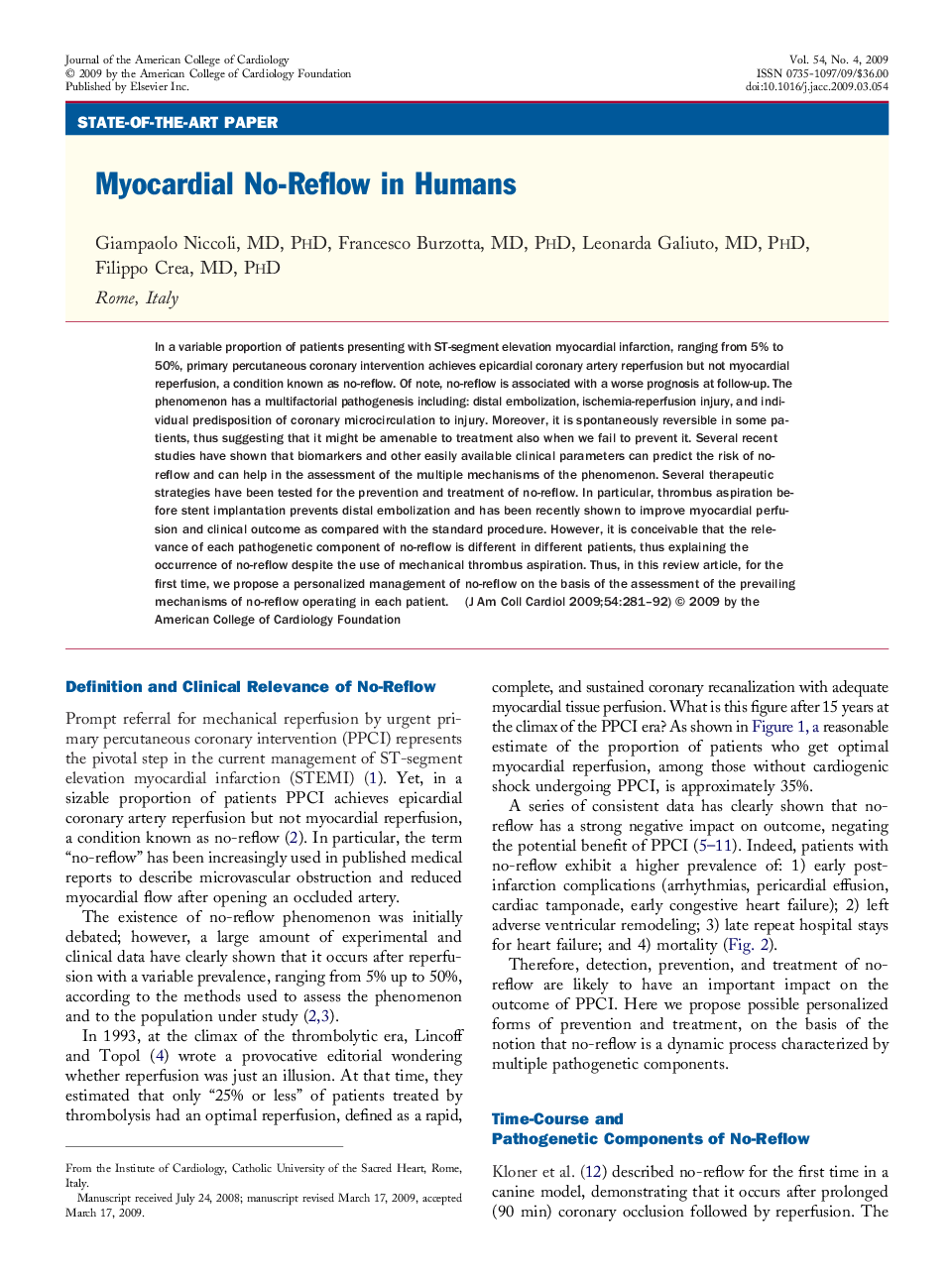| کد مقاله | کد نشریه | سال انتشار | مقاله انگلیسی | نسخه تمام متن |
|---|---|---|---|---|
| 2950766 | 1577359 | 2009 | 12 صفحه PDF | دانلود رایگان |

In a variable proportion of patients presenting with ST-segment elevation myocardial infarction, ranging from 5% to 50%, primary percutaneous coronary intervention achieves epicardial coronary artery reperfusion but not myocardial reperfusion, a condition known as no-reflow. Of note, no-reflow is associated with a worse prognosis at follow-up. The phenomenon has a multifactorial pathogenesis including: distal embolization, ischemia-reperfusion injury, and individual predisposition of coronary microcirculation to injury. Moreover, it is spontaneously reversible in some patients, thus suggesting that it might be amenable to treatment also when we fail to prevent it. Several recent studies have shown that biomarkers and other easily available clinical parameters can predict the risk of no-reflow and can help in the assessment of the multiple mechanisms of the phenomenon. Several therapeutic strategies have been tested for the prevention and treatment of no-reflow. In particular, thrombus aspiration before stent implantation prevents distal embolization and has been recently shown to improve myocardial perfusion and clinical outcome as compared with the standard procedure. However, it is conceivable that the relevance of each pathogenetic component of no-reflow is different in different patients, thus explaining the occurrence of no-reflow despite the use of mechanical thrombus aspiration. Thus, in this review article, for the first time, we propose a personalized management of no-reflow on the basis of the assessment of the prevailing mechanisms of no-reflow operating in each patient.
Journal: Journal of the American College of Cardiology - Volume 54, Issue 4, 21 July 2009, Pages 281–292